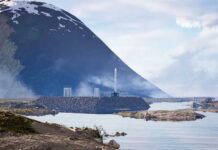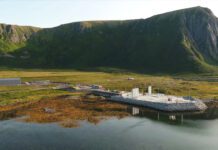
Andøya Space in Norway was first opened in 1962 and has hosted over a thousand suborbital rocket launches. To accommodate increasingly larger-sounding rockets and boost its ability to host multiple rocket launches in the same campaign, Andøya is currently building a new suborbital launch pad.
With Isar Aerospace preparing for its maiden flight from Norway, many are focused on the finalization of the Andøya Space orbital launch facility. However, the company, which is owned by the Royal Norwegian Ministry of Trade and Industry (90%) and Kongsberg Defence Systems (10%), is also well into the construction of its newest suborbital launch pad.
Two of the facility’s three active launch pads are reserved exclusively for NASA use. The US space agency utilizes the facility to launch scientific missions because of its location in relation to the cusp region of Earth’s magnetosphere, where the planet’s magnetic field lines converge, and solar wind particles can directly enter the atmosphere. The location, as a result, offers advantages when studying the interactions between solar wind and Earth’s magnetic field.
With two pads reserved for NASA, Andøya can currently only able to offer one pad for European missions. As a result, building the new launch pad will enable the company to support additional, more complex non-NASA missions.
Work on the new launch pad is progressing, and Andøya Space expects it to be ready to host its first launch campaign in September. According to the company, once completed it will be “one of the world’s most modern and capable launch pads for sounding rockets.”




